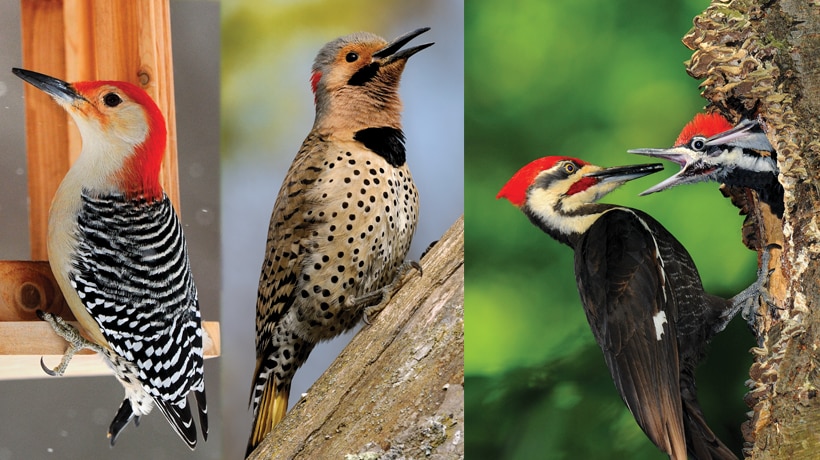Discover the Fascinating Globe of Woodpeckers: Whatever You Need to Know
The globe of woodpeckers is a world filled with distinct behaviors, intricate adjustments, and a diverse selection of types. From their habitats and circulation patterns to their feeding practices and specialized physiological attributes, woodpeckers have actually long captivated the passion of ornithologists and nature lovers alike. Comprehending the ins and outs of these fascinating birds gives a look into the complicated interaction between their biology and the atmosphere. As we explore the globe of woodpeckers further, we discover a wealth of info that clarifies their relevance in ecosystems and the difficulties they encounter in an ever-changing world.
Woodpecker Habitats and Circulation
Woodpeckers live in a diverse range of atmospheres worldwide, showcasing versatility in their distribution patterns. These resilient birds are discovered in forests, forests, savannas, and deserts throughout different continents, showing their capacity to flourish in different climatic conditions. In North America, as an example, woodpeckers can be found in both coniferous and deciduous forests, using their strong beaks to forage for pests and develop nesting dental caries in trees. In Africa, certain woodpecker species have actually adjusted to arid settings, such as the acacia timberlands, where they play a critical duty in managing insect populations.

Feeding Behaviors and Diet Plan
Woodpeckers use their strong beaks to drill right into the bark of trees, penetrating for bugs and larvae hidden below the surface. In enhancement to pests, woodpeckers likewise take in nuts, seeds, fruits, and sap.
Woodpeckers are known for their drumming behavior, which offers not just to interact with other woodpeckers but additionally to situate food. The fast drumming sound is developed by the bird pecking on powerful surfaces like dead trees or metal poles. This actions can draw in insects concealed in the timber, enabling the woodpecker to spot their existence and eat them.
Special Adjustments for Tree Climbing
In find more their experienced search of bugs hidden within tree bark, woodpeckers have advanced remarkable anatomical features that equip them with distinct adaptations for effective tree climbing. Among the crucial adaptations is their zygodactyl feet, with two toes directing ahead and two pointing backward, supplying a important source solid grasp on tree trunks. This customized foot setup permits woodpeckers to hold on to upright surfaces effortlessly, allowing them to go up and down trees with agility. Additionally, woodpeckers have tight tail plumes that function as a helpful prop while they climb up, helping in equilibrium and stability. Their solid, chisel-like beaks are not only made use of for exploration into timber however likewise for clutching onto bark as they ascend tree trunks. Woodpeckers have solid neck muscle mass and an unique skull structure that absorb the effect of consistent pecking, allowing them to climb vertically without triggering damage to their minds. These adaptations showcase the amazing transformative design that enables woodpeckers to navigate trees with accuracy and performance.
Diverse Woodpecker Species Worldwide
With over 200 different types spread out across various habitats worldwide, the household of Picidae incorporates a remarkable diversity of woodpeckers. These birds can be discovered in forests, timberlands, savannas, and also urban areas, showcasing their adaptability to various environments. From the legendary Northern Flicker in North America to the vivid and evasive Crimson-backed Flameback in Asia, each woodpecker types exhibits one-of-a-kind attributes in terms of tuft, actions, and environment choice.
Woodpeckers vary substantially in dimension, with the small Downy Woodpecker determining around 6-7 inches in size, while the effective Lineated Woodpecker can rise to 17 inches - Woodpeckers in Florida. Their beaks additionally come in different shapes and dimensions, mirroring their feeding routines. Some species concentrate on extracting bugs from tree bark, like the Acorn Woodpecker, while others, such as the Black-cheeked Woodpecker, eat fruits and seeds

Preservation Initiatives and Challenges
Conservation efforts for woodpecker populaces are important in mitigating the effect of environment loss and various other risks dealing with these varied bird species. Woodpeckers encounter numerous challenges to their survival, mainly because of deforestation, look what i found urbanization, environment adjustment, and invasive types. To deal with these concerns, conservation efforts concentrate on protecting and bring back woodpecker environments, executing sustainable forestry methods, and elevating understanding concerning the value of these birds in communities.
One substantial obstacle in woodpecker preservation is the fragmentation of their environments, causing isolated populations that are much more vulnerable to extinction - Woodpeckers in Florida. Preservationists work to produce wild animals hallways and protected locations that link these fragmented habitats, allowing woodpeckers to relocate in between various locations for feeding, breeding, and shelter

Verdict
In conclusion, woodpeckers are fascinating birds with distinct adjustments for tree climbing and feeding actions. Further research study and preservation actions are needed to make certain the survival of woodpeckers in the wild.